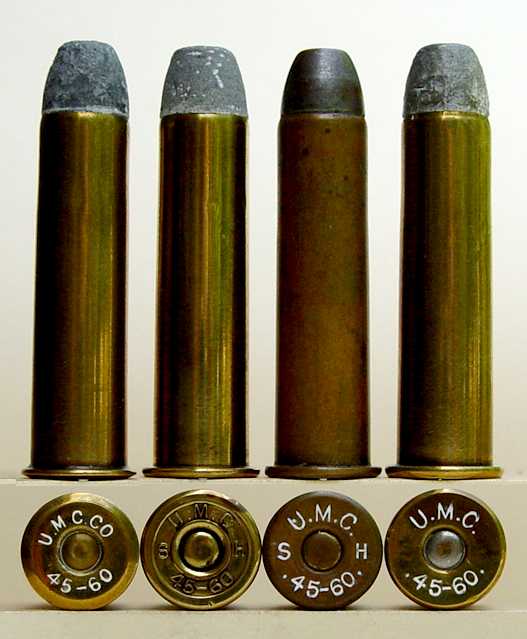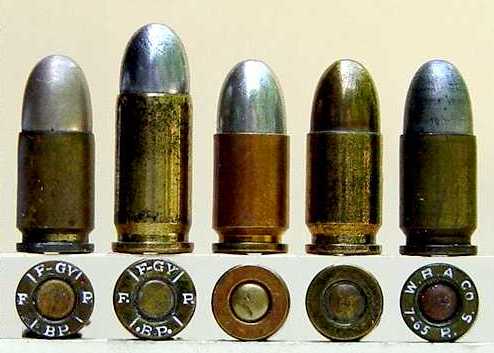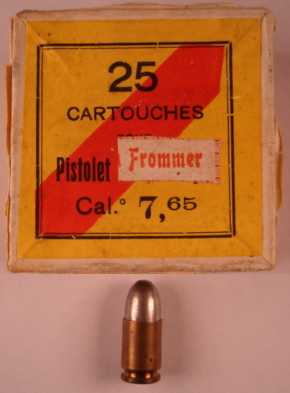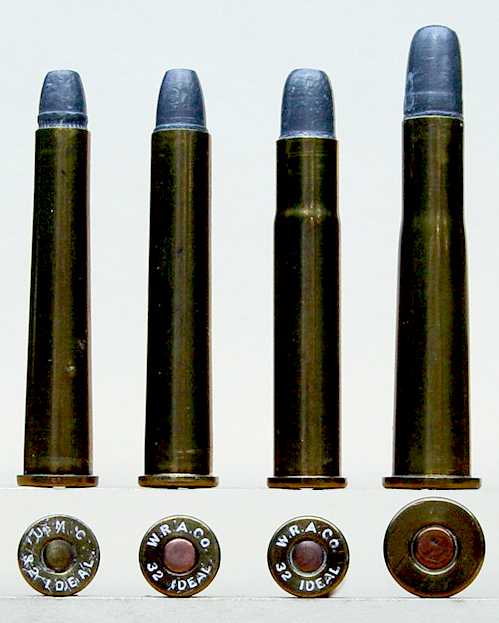|
THE CARTRIDGE COLLECTOR'S EXCHANGE |
| Contents
Cartridge
Lists
Prior Picture Pages:
Links to Other Sites
Cartridge Collectors Organizations:
Auctions:
Books:
Other Collector's Sites: |
Home of the Old Ammo Guy's Virtual
Cartridge Trading Table Featuring a wide range of antique, obsolete, and modern ammunition for collectors Picture Page July 2006 Variations of UMC's .45-60 (WCF) headstamp..... . .Winchester introduced the .45-60 center fire cartridge in 1879, one of the five calibers developed for use in their Model 1876 rifle. Due to the cut-throat nature of the ammunition industry at that time, the Union Metallic Cartridge Company probably had their version of the cartridge on the market quite soon after its introduction. The earliest of these cartridges were of folded head construction and probably had no headstamp. They did not start headstamping their cartridges for commercial sale until the early 1880s, after they had begun producing solid head cartridge cases. In the remaining 20 or so years that UMC was in business under that name, they produced no less than four different headstamps on this cartridge. The first of these was the UMC Co headstamp, which appears on just two centerfire rifle cartridges, the .45-60 WCF and the .50-95 WCF Express. The cartridges with this headstamp have the early solid head cases, many of which will not have a headstamp, but can be identified by their beveled edge heads. Next came the cartridges which advertised the the company's solid head case construction by including the letters 'S' and 'H' in the headstamp, as shown on the second and third cartridges in the picture. The headstamp of the second cartridge is raised, the purpose of which is not known. It is possible that a customer may have special-ordered it. On the other hand, UMC may have produced these classy looking (and more costly) headstamps to give their customers the perception that their ammunition was higher quality (and certainly prettier) than that of their competitors. It is interesting to note that Winchester was soon producing a few of its own raised headstamp cartridges. The raised headstamps of both companies are explored further on my May 2006 picture page in the discussion of .44-40 headstamps. The fourth cartridge in the picture shows what I believe to have been the final headstamp prior to the merger of UMC and Remington Arms in 1910, shortly after which the familiar and long lasting REM-UMC headstamp was adopted by the new company. The lettering of the headstamps of the last two cartridges in the picture are so much alike that I would be willing to bet that this 'final' headstamp resulted from grinding the 'S' and 'H' off of the existing headstamp bunters. . . . . . The 7.65 mm Frommer and a few wannabies...........
. The first two cartridges in this picture are the 7.65mm Frommer and the 7.65mm Frommer Long. They were developed for a semi-automatic pistol introduced in 1901 by Rudolph Frommer, a Hungarian. The Frommer pistol enjoyed limited success, and production of the pistol as well as its cartridge ceased around the beginning of World War 1. In 1905, J.P. Sauer and Son introduced a pistol that was chambered for the 7.65mm Roth-Sauer cartridge developed by G. Roth, which was essentially a copy of the shorter Frommer. The last three cartridges in the picture are examples of the Roth-Sauer cartridge. Aside from the headstamp, about the only way to tell the cartridges apart is by the appearance of the case mouth of the Frommer, which is crimped to the extent that a shallow cannelure is formed in the bullet jacket where it enters the case. The Roth-Sauer case mouth appears uncrimped. The Sauer pistol apparently sold well enough in the US that Winchester produced its own version of the cartridge over a 10 year period beginning in 1908. The other two were probably made in Europe, where production continued until around the start of the second World War. .
If anyone knows who made this box, please let me know. It would also be interesting to try to take a peek under the 'Frommer' label. . . . A group of mysterious wildcats.....................
. The four cartridges in this picture were in a large collection I bought several years ago, and in the intervening time, I haven't been able to find any information about them. They are identified as Zischang cartridges, developed I assume by the rifle maker August O. Zischang, or, less likely, by his son William. A.O. came to America from Germany in 1876, and soon was employed by the Sharps Rifle Company. In 1879, he opened a gun shop in Syracuse, N.Y., and was known for producing high quality Scheutzen-style target rifles, often based on the Sharps Borchardt action. He produced his own bullet molds which had adjustable base plugs, allowing bullets of varying weights to be cast from the same mold. A. O. died in 1925, and his son continued operating the shop until 1943. From the left, the cartridges in the picture include the .25-20 Zischang, the .28-25 Zischang, the .30-30 Zischang, and the .30-35 Zischang. Obviuosly, the first three were made using reformed .32 Ideal cases. The fourth appears to be based on a .32-35 Maynard or Stevens case. Dimensions are as follows: . #1-.25-20 bullet- 0.258" neck- 0.281" base- 0.349" rim- 0.411" case length- 1.786" overall length- 2.090" . #2- .28-25 bullet- 0.281" neck- 0.310" base- 0.347" rim- 0.408" case length- 1.785" overall length- 2.123" . #3- .30-30 bullet- 0.292" neck- 0.324 shoulder- 0.346 base- 0.347" rim- 0.408" case length- 1.754" overall length- 2.128" . #4- .30-35 bullet- 0.310" neck- 0.323" shoulder- 0.355 base- 0.403" rim- 0.506" case length- 1.872" overall length- 2.366" . I have no reference book that even mentions these cartridges, so I would appreciate hearing from anyone who has any information they would want to share. . I did find this picture
of one of A. O. Zischang's rifles that sold for $37,375 as Lot 3092 in
the
April 2004 Rock Island Auction Company (RIA) auction. It would surely please
A.O. to know his work was still appreciated so highly. Unfortunately, the
caliber of the rifle was not mentioned in the description.
. . . . . . . |



 Note:
My observation regarding the case mouth crimp was blown out of the water by
an e-mail I received from a Frommer collector, who included this picture of
a Frommer cartridge and the box it came from. His describes the cartridge as
being unheadstamped, with a brass primer and a nickel jacketed bullet that
is not crimped in place at the case mouth. so this leaves me wondering of
the third and fourth cartridges in the picture above are Frommers or Roth-Sauers.
The third one sure looks a lot like the one from the box.
Note:
My observation regarding the case mouth crimp was blown out of the water by
an e-mail I received from a Frommer collector, who included this picture of
a Frommer cartridge and the box it came from. His describes the cartridge as
being unheadstamped, with a brass primer and a nickel jacketed bullet that
is not crimped in place at the case mouth. so this leaves me wondering of
the third and fourth cartridges in the picture above are Frommers or Roth-Sauers.
The third one sure looks a lot like the one from the box. 
